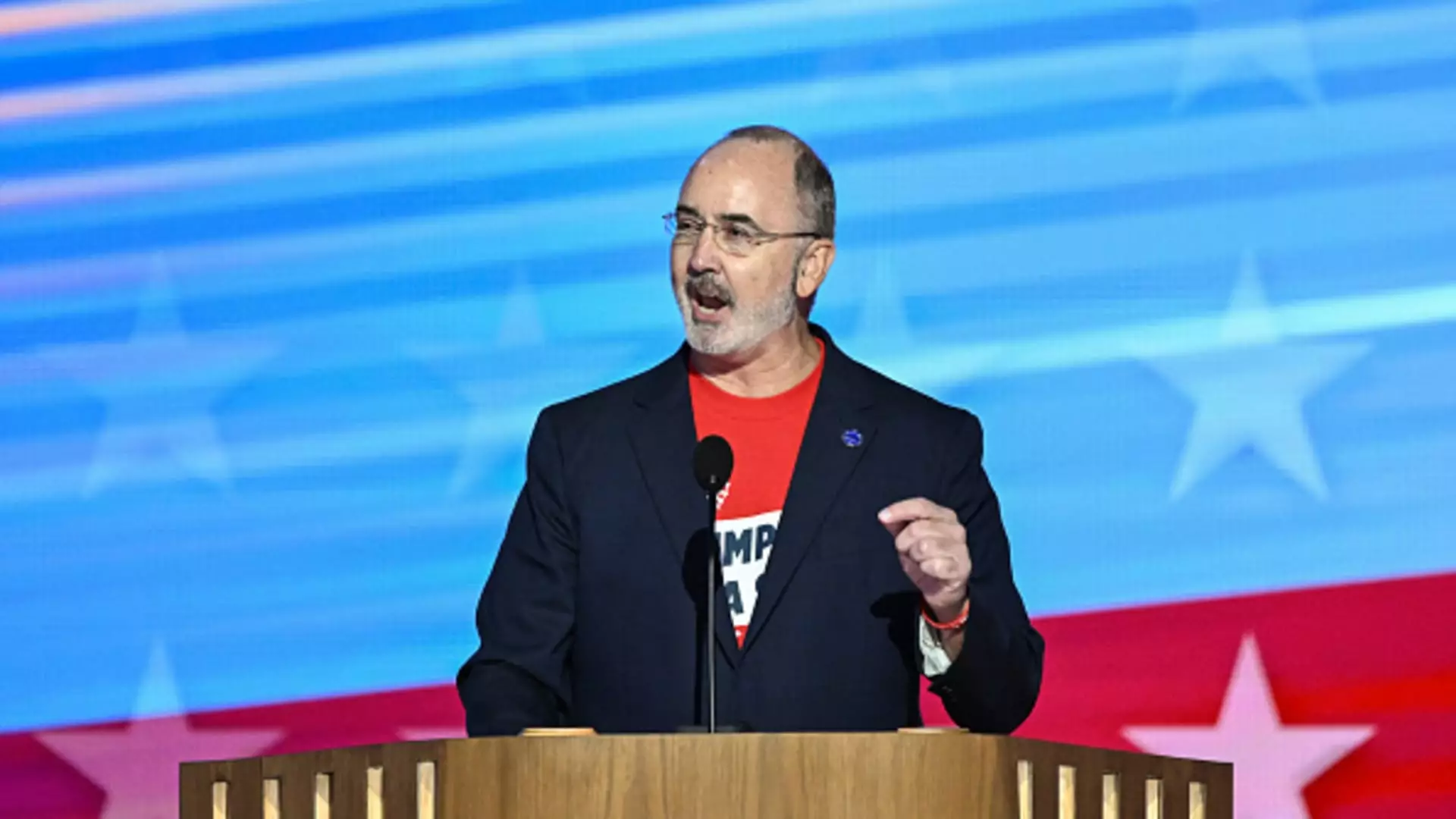In an unexpected twist that could shake the foundations of American labor politics, United Auto Workers (UAW) President Shawn Fain has publicly shown support for President Donald Trump’s controversial tariff strategy. Once a vehement opponent of Trump’s administration, Fain has evolved into an unlikely ally. His endorsement of the 25% tariffs on automobiles and parts signals not only a strategic pivot but also raises important questions about the political landscape in which labor unions operate.
Fain’s position is grounded in his belief that the American working class has been suffering for decades, exacerbated by trade policies like the North American Free Trade Agreement (NAFTA) introduced in 1992. Citing this historical context during an appearance on ABC News’ “This Week,” he remarked that “tariffs are an attempt to stop the bleeding from the hemorrhaging of jobs in America.” This declaration challenges the traditional perception of labor unions as staunchly opposing any conservative economic policy, painting a complicated picture of 21st-century labor negotiations.
The Rationale Behind Tariffs
While tariffs often evoke feelings of uncertainty and chaos within the economics community, Fain contends that they possess the potential to revitalize American manufacturing. This might sound contradictory coming from a labor leader, but his argument interprets tariffs not as an end-all solution but as a critical component in addressing long-standing issues in the job market. His remarks emphasize holding corporations responsible for any consequence on consumer prices—a sentiment that rings a bell for many constituents grappling with economic hardship.
Yet, the response from the auto industry has not been uniform. Major players, including Ford CEO Jim Farley, have voiced concerns, placing emphasis on potential disruption and rising costs that could ensue from these very tariffs. This leaves us pondering: Is Fain’s support an authentic reflection of the working class’s desires, or simply a tactical maneuver in the complex chess game of American enterprise and labor relations?
Negotiations and Changes in Stance
The UAW’s stance toward Trump’s trade policies appears to be more than just a marching order; it’s an acceptance of reality. As Fain mentioned, he has yet to converse directly with Trump; however, he is “working with his team”—a statement that underscores a wheeling and dealing spirit characteristic of labor movements. He also indicated that the union is engaged in active negotiations with the Trump administration to mitigate what they termed a “free trade disaster.”
Equally, the UAW’s willingness to consider the consequences of these tariffs showcases an evolving political identity. Once strictly partisan, the union’s adaptability reflects a broader trend in organized labor—where pragmatism can triumph over dogma. This raises intriguing questions about the future of union leadership and whether political party affiliation will come to matter less than the actual material conditions affecting workers.
The Complexities of Worker Advocacy
What stands out most in this dynamic interaction between Fain and Trump is how the very essence of worker advocacy has morphed. Historically, unions have portrayed themselves as defenders of the working class against corporate greed. However, this current realignment challenges the notion of what it means to be a champion of labor. If tariffs are meant to protect American jobs, do advocates like Fain inadvertently find common ground with administration policies they once vehemently opposed?
Despite the support from Fain, skepticism still lurks among several union detractors and auto executives. They assert that evidence of ‘cost and chaos’ generated by tariffs stands as a cautionary tale. The divide between corporate interests and labor needs has never been more pronounced, particularly when American workers find themselves pitted against the economic realities of global trade.
A Monitor’s Shadow
Adding another layer to this already complex narrative is the strain of ongoing federal monitoring over the UAW. Following allegations of corruption—including embezzlement and bribery—there exists a sense of distrust within the organization. Adding to the unease, some reports indicate that Fain himself has come under scrutiny in the ongoing investigations. The reality of these circumstances complicates every strategic move his leadership team decides to make. Can a union entangled in misconduct truly be seen as a responsible partner for a presidency riddled with its own controversies?
As the American auto industry grapples with unprecedented challenges and profound shifts in its labor relations, Fain’s evolving image promises to have lasting implications for both union members and the larger political spectrum. The ambiguous balance between worker rights and corporate interests is an ever-present negotiation that Fain seems uniquely positioned to champion, albeit within a labyrinth of distrust and complexity.


Leave a Reply